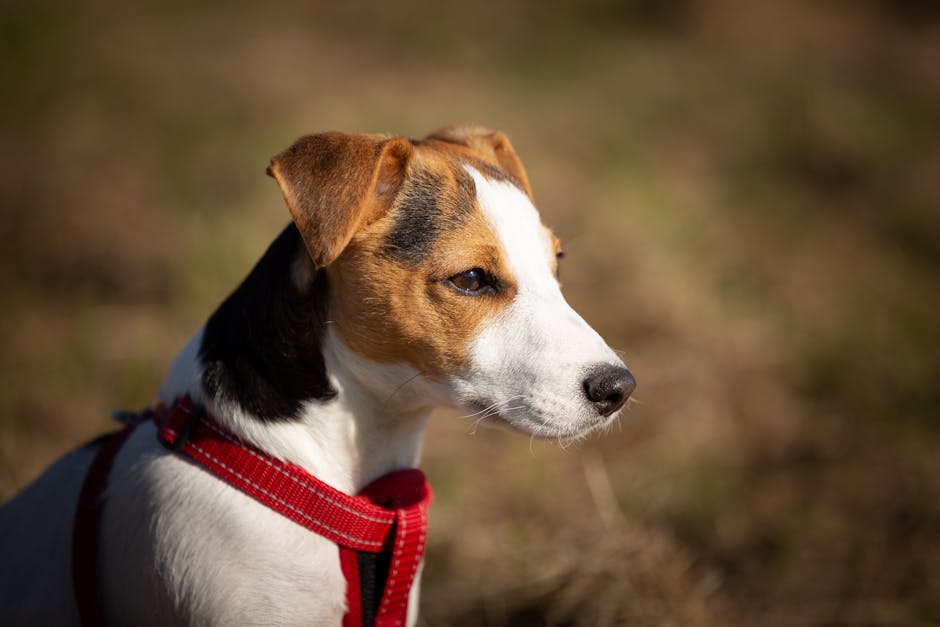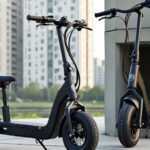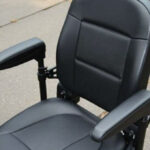If you’re seeking the ideal bike dog leash, rest assured this guide has all the insights you need.
Quick Answers:
- A bike dog leash securely connects your dog to your bike, offering stability and safety.
- It’s a great way to give active dogs the exercise they crave while biking.
- Prioritize gear that prevents tangling and accidental tipping, such as the Bike Tow Leash or Walky Dog Plus.
Biking with dogs can be an exhilarating experience, marrying the joy of cycling with the companionship of your canine friend. Not only does this activity provide an excellent workout for both you and your dog, but it also creates an opportunity to strengthen your bond. However, safety should never be compromised.
Utilizing a bike dog leash ensures that your dog stays at a safe distance, minimizing the risk of accidents. Such leashes are designed to keep you in control, allowing you to focus on the road while providing your dog with a safe, consistent space to run alongside your bike. From preventing dog-steering to avoiding the pitfalls of uneven trails, the right equipment makes all the difference.
Understanding the exercise benefits is crucial. Dogs, especially energetic breeds, thrive with exercise levels that sometimes surpass what a simple walk can offer. Running alongside a bike allows dogs to burn off energy quickly and maintain their fitness—all while enjoying the outdoors they love.

Essential Gear for Biking with Your Dog
When it comes to biking with your dog, having the right gear is crucial for a safe and enjoyable experience. Let’s break down the essentials you’ll need:
Bike Dog Leash
A bike dog leash is your primary tool for safely biking with your dog. These leashes attach to your bike, keeping your dog at a safe distance and preventing sudden pulls that could cause you to lose balance. The Bike Tow Leash and Walky Dog Plus are popular choices, each offering unique features to improve stability and control.

Key Features to Look For:
- Sturdy Attachment: Ensures the leash stays secure on your bike.
- Shock Absorption: Helps manage sudden pulls from your dog.
- Adjustable Length: Allows for a comfortable distance between you and your dog.
Body Harness
A body harness is essential for your dog’s safety and comfort. Unlike collars, harnesses distribute pressure evenly across a dog’s body, reducing the risk of injury.
Consider These Features:
- Padded Straps: For added comfort.
- Adjustability: Ensures a snug fit.
- Handle: Useful for assisting your dog over obstacles or in case of emergencies.

Reflective Gear
Safety doesn’t stop at daylight. Reflective gear is vital for visibility during low-light conditions. Both you and your dog should be equipped with reflective elements to ensure you’re seen by other road users.
Reflective Gear Options:
- Reflective Vests: For both you and your dog.
- LED Collars: Provide extra visibility.
- Reflective Strips: Can be added to your bike and harness.

Conclusion
Equipping yourself and your dog with the right gear is the first step to a safe biking trip. With the right bike dog leash, body harness, and reflective gear, you’re well on your way to enjoying the great outdoors together. Stay tuned for our next section on training your dog for biking!
How to Train Your Dog for Biking
Training your dog for biking is all about preparation and patience. Use the right tools, focus on obedience, and always keep leash laws in mind. Here’s how to get started:
Training Tools
Before hitting the trails, make sure your dog is comfortable with the biking setup. Start with these tools:
-
Bike Dog Leash: Begin with a secure, sturdy bike dog leash. This keeps your dog safely by your side and prevents sudden jerks.
-
Harness: Use a well-fitted body harness to ensure your dog’s comfort and safety. Avoid attaching the leash to a collar, as it can cause injury.
-
Treats and Clickers: Positive reinforcement is key. Use treats and clickers to reward good behavior and build positive associations with biking.
Obedience Training
Obedience is crucial for a safe biking experience. Focus on these commands:
-
Recall: Teach your dog to come back to you, even when distracted. This is essential if your dog gets loose.
-
Heel: Your dog should walk beside you without pulling. Practice this on walks before transitioning to biking.
-
Stop: Your dog should stop immediately on command to prevent accidents.
Leash Laws
Always be aware of local leash laws. In some areas, dogs must be leashed at all times, even on trails. Here’s what to consider:
-
Check Regulations: Know the rules for the areas you plan to bike in. Some places require dogs to be leashed, while others allow off-leash with voice control.
-
Respect Other Trail Users: Not everyone is comfortable around dogs. Keep your dog under control to ensure a positive experience for everyone.
Starting Slow
Begin with short sessions to get your dog accustomed to biking. Gradually increase the distance as your dog becomes more comfortable and confident.
-
Flat Terrain: Start on flat, even surfaces to help your dog get used to the movement and noise of the bike.
-
Short Distances: Keep initial rides brief to prevent overexertion and build your dog’s stamina over time.
Training your dog for biking takes time, but with the right approach, you’ll both be ready for safe and enjoyable rides. Next, we’ll explore how to choose the right bike dog leash to complement your training efforts.
Choosing the Right Bike Dog Leash
Selecting the right bike dog leash is crucial for a safe and enjoyable biking trip with your furry friend. Two popular options are the Bike Tow Leash and the Walky Dog Plus, each offering unique features to consider.
Bike Tow Leash
The Bike Tow Leash is designed for active dog owners who want a reliable and sturdy leash. It offers a safe and stable design that keeps your dog at a safe distance from your bike, preventing tangles and accidents. This leash is versatile and fits most bikes and tadpole trikes, making it a great choice for various biking setups.
Key Features:
- Hands-Free Operation: Allows you to keep both hands on the handlebars.
- Stability: Prevents bike tipping and dog-steering.
- Easy Learning: Dogs quickly learn the correct position beside the bike.
This leash is especially recommended for medium to large dog breeds, ensuring they stay fit and happy.
Walky Dog Plus
The Walky Dog Plus is known for its ease of installation and adjustability. With only two bolts needed for setup, it’s a convenient option for most pet owners. The internal springs provide pull absorption, which helps maintain balance if your dog suddenly jerks away.
Key Features:
- Quick Release: Easily switch the leash between bikes with a spare jaw clamp.
- Adjustable: Suitable for dogs of different heights and sizes.
- Safety Positioning: Keeps your dog safely to the side of the bike.
This leash is perfect for owners who want a straightforward, fun way to bike with their dog.
Leash Features to Consider
When choosing between these options, keep the following features in mind:
- Compatibility: Ensure the leash fits your bike model. Check for compatibility with multiple bike types if needed.
- Durability: Look for materials that withstand wear and tear, like stainless steel components.
- Safety: Features like shock absorption and secure attachments are essential for preventing accidents.
- Ease of Use: Consider how easy it is to attach and detach the leash, especially if you plan on switching between bikes.
Choosing the right bike dog leash will improve your biking experience and keep your dog safe and secure. Up next, we’ll cover important safety tips to ensure every ride is smooth and accident-free.
Safety Tips for Biking with Your Dog
Biking with your dog can be a fantastic way to keep both you and your furry friend active. However, safety should always be your top priority. Here are some essential tips to help you avoid accidents and protect both you and your dog during your biking trips.
Avoiding Accidents
-
Secure Attachments: Always ensure your bike dog leash is properly attached to your bike. A securely fastened leash, like the Bike Tow Leash or Walky Dog Plus, can prevent sudden detachment that might lead to accidents.
-
Safe Distance: Keep your dog at a safe distance from your bike. Leashes with features like shock absorption, as in the Walky Dog Plus, help maintain balance if your dog suddenly pulls or jerks.
-
Even Terrain: Stick to even and familiar paths, especially when starting out. Rough terrain can be unpredictable and may cause your dog to trip or pull unexpectedly.
Protecting Yourself
-
Proper Gear: Wear a helmet and other protective gear to safeguard yourself in case of falls. The unexpected can happen, and it’s best to be prepared.
-
Two Hands on the Handlebars: Use a bike dog leash that allows hands-free operation, like the Bike Tow Leash, to keep both hands on the handlebars for better control.
-
Reflective Gear: Equip both yourself and your dog with reflective gear if you plan to bike in low-light conditions. This increases visibility and reduces the risk of accidents.
Understanding Dog Behavior
-
Training: Invest time in training your dog to get used to biking. Start with short distances and gradually increase as your dog becomes more comfortable. Dogs are like people; they need time to build stamina.
-
Breaks and Hydration: Always bring water for your dog and take breaks to let them hydrate. This is especially important on hot days to prevent overheating and exhaustion.
-
Monitor Behavior: Keep an eye on your dog’s behavior. If they seem stressed or tired, it’s time to stop. A calm and attentive dog makes for a safer biking experience.
By following these tips, you can ensure a safe and enjoyable biking trip with your dog. Proper preparation and awareness of your surroundings are key to a successful ride. In the next section, we’ll address some frequently asked questions about biking with dogs.
Frequently Asked Questions about Biking with Dogs
Can I bike with my dog on a leash?
Yes, you can bike with your dog on a leash, but use a bicycle dog leash. These leashes are specifically designed to keep your dog at a safe distance from your bike, preventing tangles and accidents. A regular leash can be dangerous as it might get caught in the wheels or cause you to lose control. For added safety, consider using a reflective harness for your dog. This will make your pet more visible, especially in low-light conditions, reducing the risk of accidents.
Is it good to run a dog on a bike?
Running your dog while biking can be a great way to keep them fit, but it’s important to consider their health. Puppies and young dogs should not run long distances as their growth plates are still developing. Always consult your vet before starting a biking routine with your dog, especially if they are young or have any health concerns. Your vet can provide guidance on the appropriate distance and pace for your dog to ensure their safety and well-being.
How do I protect myself from dogs while biking?
Encountering stray or aggressive dogs while biking can be unsettling. To protect yourself, consider carrying pepper spray or a dog deterrent spray. These can be effective in deterring aggressive dogs without causing them harm. It’s also wise to be aware of your surroundings and avoid areas known for stray dogs. If a dog approaches you aggressively, try to remain calm, avoid eye contact, and slowly back away. Having these precautions in place can help you feel more secure while biking.
By addressing these common questions, you can ensure that both you and your dog have a safe and enjoyable biking experience. In the next section, we’ll wrap up with some concluding thoughts on biking with dogs.
Conclusion
Biking with your dog can be a rewarding experience, offering both you and your furry friend a chance to enjoy the outdoors while staying active. At Doot Scoot, we are passionate about promoting eco-friendly biking as a sustainable way to explore urban landscapes and beyond. By choosing to bike, you’re not only enhancing your dog’s health and happiness but also contributing to a greener planet.
Our commitment to community building is at the heart of everything we do. We believe that biking with dogs fosters a sense of camaraderie among pet owners and cyclists alike. Sharing tips, experiences, and stories helps create a supportive network that encourages safe and enjoyable biking for everyone. By joining this community, you can connect with like-minded individuals who share your passion for biking and dogs.
We invite you to explore more about our mission and services on our Doot Scoot website. Whether you’re a seasoned cyclist or new to biking with your dog, we’re here to help you make informed choices and improve your biking trips. Together, let’s make biking with dogs a fun and eco-friendly activity that strengthens our communities and protects our planet.










